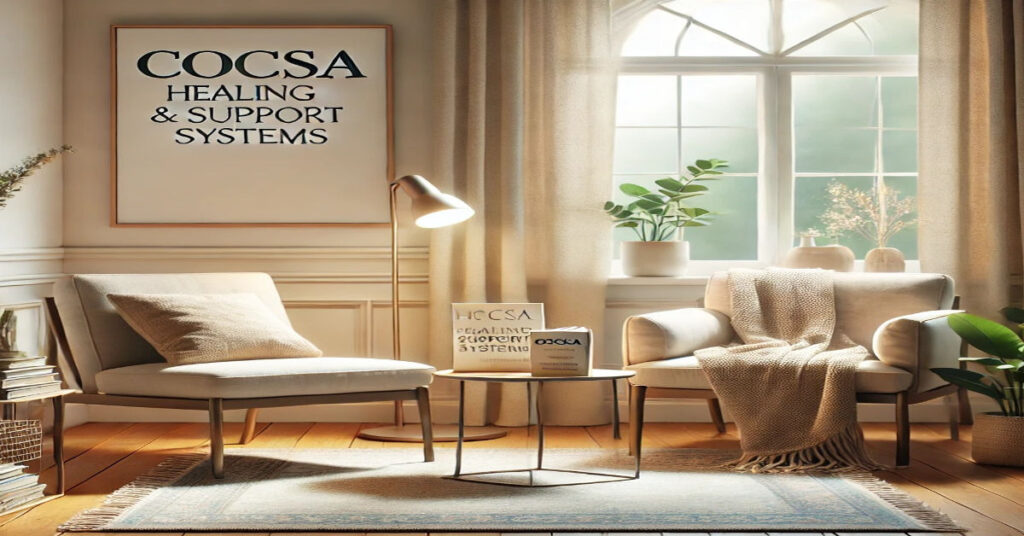In recent years more conversations have emerged about the various forms of childhood trauma including sensitive topics like COCSA or child-on-child sexual abuse. The topic, though not widely covered in mainstream discourse, is crucial for those seeking understanding, healing, and prevention. COCSA highlights a specific form of sexual abuse involving minors, often surrounded by legal, psychological, and emotional complexities. Understanding this issue is essential for caregivers, educators, legal professionals, and support networks to foster safe environments for children and help survivors navigate their recovery journeys.
This article aims to explore what COCSA entails, its psychological impact, legal considerations, support resources, and steps toward prevention and healing.
What Is COCSA?
COCSA, or child-on-child sexual abuse, occurs when one minor engages in sexually abusive behavior toward another minor. Unlike adult-perpetrated abuse, COCSA often involves individuals in close age proximity but differs due to the involvement of coercion, manipulation, or force.
This type of abuse typically encompasses any non-consensual sexual activity between children, although its legal and social definitions vary by jurisdiction. It’s important to distinguish this behavior from natural childhood curiosity about bodies and relationships. COCSA is not about curiosity but is classified as harmful behavior when it involves an imbalance of power, coercion, or emotional manipulation.
Legal Perspectives on COCSA
1. Varying Definitions Across Jurisdictions
The legal definition of COCSA can vary significantly depending on local and national laws. Some jurisdictions view cases involving minors close in age differently compared to cases involving larger age gaps. The legal system may categorize these cases under family or juvenile law rather than the adult criminal system, focusing on rehabilitation and intervention for both parties.
2. Age Difference and Consent
COCSA cases often assess the age difference and developmental maturity between the minors involved. Even in cases where the age difference is minimal, the presence of force or manipulation can transform a situation from mutual experimentation to abuse. Consent laws for minors generally consider developmental maturity, and therefore, the law places emphasis on protecting the survivor.
3. Legal Protections and Interventions
Most legal systems prioritize rehabilitation rather than punitive measures when addressing COCSA. Juvenile programs may focus on psychological counseling, therapeutic interventions, and family involvement to address the underlying causes of the harmful behavior and promote healing for both parties.
Psychological and Emotional Impact of COCSA
1. Short-Term Effects
The immediate effects of COCSA on a child survivor may include:
- Confusion and fear.
- Sleep disturbances or nightmares.
- Difficulty trusting others, especially peers.
- Behavioral changes such as withdrawal, aggression, or regression.
2. Long-Term Psychological Consequences
If unaddressed, COCSA can have long-lasting effects on the survivor, including:
- Low self-esteem and guilt.
- Difficulty forming healthy relationships.
- Post-Traumatic Stress Disorder (PTSD) or anxiety.
- Intimacy or sexual difficulties in adulthood.
The person who caused harm may also face emotional consequences, including guilt, confusion, and future behavioral risks, which further underscores the need for therapeutic intervention.
3. Family Dynamics and Challenges
COCSA doesn’t only affect the children directly involved—it can also strain family dynamics. Families may struggle with denial, blame, or guilt. As such, family-based counseling and support networks are often essential for the healing process.
Understanding Why COCSA Happens
COCSA is often the result of multiple interconnected factors, including:
- Exposure to sexual content: Early exposure to inappropriate media or adult behavior can influence a child’s understanding of boundaries.
- Lack of proper education about boundaries and consent: Inadequate education leaves children vulnerable to misunderstanding what constitutes acceptable behavior.
- Abuse or trauma history: Children who have experienced abuse themselves may replicate the behavior.
- Neglect or unsupervised environments: Situations where children lack proper supervision can foster harmful interactions.
Understanding these underlying causes is crucial for implementing preventive strategies.
Recognizing Signs of COCSA
Recognizing COCSA early can help minimize long-term damage. Some common signs include:
- Behavioral changes: Unusual aggression, withdrawal, or sudden mood swings.
- Sexual knowledge beyond age-appropriate levels: Talking about or displaying behaviors that are not typical for their age group.
- Regression: Reverting to behaviors like bed-wetting or thumb-sucking.
- Avoidance of specific people or places: A child avoiding certain peers or locations may signal a problem.
Parents, teachers, and caregivers should be trained to spot these signs and provide safe spaces where children feel comfortable discussing their experiences.
Support and Treatment Options
1. Counseling and Therapy
Therapeutic interventions are the cornerstone of healing for both survivors and those who cause harm. Various forms of therapy may include:
- Trauma-focused cognitive behavioral therapy (TF-CBT): Helps survivors process trauma and develop coping mechanisms.
- Play therapy: Used for younger children to express their experiences through play.
- Family counseling: Addresses family dynamics and fosters a supportive recovery environment.
2. Peer Support Groups
Support groups for survivors provide a safe space to share experiences and learn coping strategies. Such groups help reduce feelings of isolation and shame.
3. Rehabilitation Programs for Those Who Caused Harm
Many jurisdictions focus on rehabilitation rather than punishment. Programs typically involve therapy to address the root causes of harmful behavior, teach healthy boundaries, and develop empathy.
4. Educational Resources
Providing families with resources and workshops on topics like boundary-setting, communication, and consent can play a critical role in preventing COCSA and supporting recovery.
Prevention Strategies for Families and Communities
1. Open and Honest Communication
Encourage conversations about body boundaries, consent, and personal safety from a young age. Children should know they can speak to trusted adults if they feel uncomfortable or confused.
2. Age-Appropriate Sex Education
Comprehensive sex education tailored to different age groups can teach children about boundaries, respect, and consent, helping them recognize inappropriate behavior.
3. Supervision in Social Settings
Supervising children’s interactions and creating structured environments, particularly in shared spaces like schools, daycare centers, and playgrounds, can minimize risks.
4. Addressing Exposure to Harmful Content
Monitoring children’s access to media and ensuring that age-appropriate content is available reduces the risk of premature exposure to sexual themes.
Community Involvement in Addressing COCSA
1. Training for Educators and Caregivers
Teachers, counselors, and daycare workers play a crucial role in identifying and addressing early signs of COCSA. Providing them with adequate training helps ensure timely intervention.
2. Collaboration Between Legal and Mental Health Professionals
Collaboration ensures that both legal accountability and psychological recovery are prioritized in cases of COCSA, providing comprehensive care to all parties involved.
3. Creating Awareness Campaigns
Public awareness campaigns can help destigmatize discussions about COCSA, encourage survivors to come forward, and educate communities on prevention strategies.
The Role of Online Resources and Support Networks
Online platforms provide invaluable resources for those dealing with COCSA. They offer educational materials, survivor support forums, and professional advice. Some organizations even provide virtual therapy sessions, making it easier for families in remote areas to access help.
However, it’s essential to rely on verified and reputable websites when seeking information and assistance to avoid misinformation.
The Importance of Respectful Terminology
As conversations about COCSA evolve, it’s important to remember that not every survivor identifies with the term. When discussing someone’s experience, respect their preferred terminology and listen to how they describe their situation. Language is powerful, and using the correct terms can validate a survivor’s experience and promote healing.
Conclusion
COCSA is a sensitive and multifaceted issue that requires understanding, empathy and strategic intervention. Addressing it involves a comprehensive approach—educating families, training educators, creating supportive environments, and ensuring timely access to therapy and resources. With community involvement and proper education, we can reduce instances of COCSA, support survivors, and rehabilitate those who have caused harm, fostering healthier environments for children to thrive.
FAQs
What does COCSA stand for?
COCSA stands for child-on-child sexual abuse, involving a minor engaging in sexually abusive behavior toward another minor.
How is COCSA different from natural sexual exploration?
COCSA involves coercion, manipulation, or force, distinguishing it from normal, curiosity-driven exploration between children.
Are both the survivor and the child who caused harm treated?
Yes, both parties often receive therapy—survivors for trauma recovery and those who caused harm for behavioral rehabilitation.
What are common warning signs of COCSA?
Behavioral changes, inappropriate sexual knowledge, withdrawal, and regressive behaviors are key warning signs.
How can families prevent COCSA?
Open communication, age-appropriate sex education, and supervised environments are effective preventive measures.
Is COCSA always handled through the legal system?
Not always. Many cases are addressed through family counseling and juvenile intervention programs rather than criminal prosecution.







